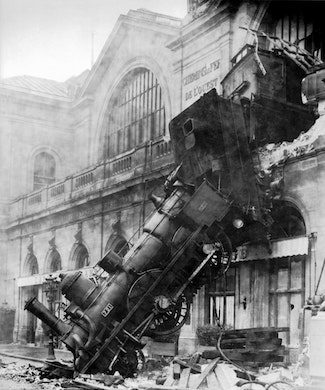
We often think about documenting our things- we will get to it sometime- but things happen! Here are seven reasons for getting this done sooner rather than later.
- The primary reason most private collectors give for wanting to document their collections is because they know they need to for insurance purposes, and that is certainly a valid reason, not only for private collectors but for all collections. Having each item photographed and well documented, including such important information as where the item is kept or stored, is extremely useful in the case of a disaster, theft, or if the item becomes damaged. You can quickly provide your insurance agent or the police accurate descriptions and photos of what is missing or was lost or damaged, and if you’ve used a cloud-based system to store your catalog, you don’t have to worry about losing your documentation as well.
- Good documentation also increases the intrinsic value of an object. A careful description of the item, who made it and why, the materials and techniques used in its manufacture or creation, where it came from, and its path from creator to you, its current steward-- all contribute to the meaning of the object and why it is in your collection in the first place. It is also how you begin to perceive the interconnections of each object to other items in your collection-- through those same people, places, techniques, materials, etc. For family heirlooms, recording the stories behind the lives of these objects adds tremendous intrinsic, historical and sentimental value and meaning to them and to generations of future family members.
- Beyond that, documentation can increase the monetary value of items. You might know all about the items in your personal collection, but what if something happens to you? Your family doesn't know that the small basket on top of your bookshelf is a rare and valuable Narragansett basket- something happens to you and your sister-in-law ends up with it- she puts a plant in it.
- As you build your catalog, you’ll start to see what you truly have- you may find that you have more of one type of item than you would have thought. Additionally, you may find gaps in your collection- perhaps a time period, design or region that is not well represented. You’ll keep your eye open for those missing pieces at the next auction or antique market! In the museum world, this helps to inform the collection policy- determining what sorts of pieces would enhance the institution's ability to tell the stories it was created to preserve and tell.
- Cataloging can help to preserve your collection. Take that fragile object out of the case once, photograph it well and measure it, then put it back in the case. You’ll find that you can contribute a good deal more to the record just from the photographs. Going forward, you can visit and display that item in detail from your smartphone or laptop anywhere in the world without having to physically disturb it again.
- One note, and it might seem a little obvious but, the better you document your things, the better documented they will become! Including a good description, noting as many details as possible will pay off when you search for a name, or a material, or a place, and that item comes up. You’ll find relationships you may not have known existed.
- Lastly, it can be just plain fun. You’ll get to know your collection even better, become a better observer, and will likely learn a great deal along the way.




